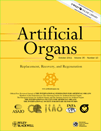Atrial Fibrillation in Chronic Hemodialysis Patients: Prevalence, Types, Predictors, and Treatment Practices in Greece
Abstract
Atrial fibrillation (AF), the most common sustained arrhythmia in clinical practice, is associated with increased mortality and cardiovascular morbidity both in nonuremic and (recently) in dialysis patients. The aims of this study are: (i) to assess the prevalence of AF, the risk factors, and predictors of its presence in a cohort of incident hemodialysis (HD) patients in Greece and (ii) to report on current practices in the management of these patients. This is a prospective, cross-sectional, multicenter study of 574 patients on a regular HD program for >6 months. Demographic characteristics, cause of renal disease, cardiovascular risk factors, medication use, dialysis data (Kt/V, dialysis method, type of dialysate), 12-lead electrocardiogram (ECG) (interdialytic day), and cardiac echo data were collected. Pertinent demographic, ECG, and echocardiographic data were entered into univariate and multivariate analyses to evaluate associations with AF. The CHADS2 score (congestive heart failure [HF], hypertension, age ≥75, diabetes, previous stroke/transient ischemic attack [TIA]) was estimated and clinical practices in high-risk (CHADS2 score ≥2) patients were evaluated. The cohort included 368 men (64.1%) and 206 (35.8%) women (mean age 65.1 ± 14.4 years) with a mean duration on dialysis of 72.1 ± 60.4 months. Hypertension (75.6%) and coronary artery disease (47.2%) were the commonest cardiovascular risk factors for AF. The prevalence of AF was 23.2% and showed an age-dependent increase; in patients <50 years, AF was present in 9.3%, while in patients ≥80 years, its prevalence increased to 36.4%. Furthermore, 8.3% of patients had permanent, 1.8% persistent, 12.7% paroxysmal AF, while the prevalence of paroxysmal atrial flutter and sick sinus syndrome were 1.2 and 2%, respectively. Logistic regression analysis showed that age, smoking, left atrial and aortic root diameter, β-blocker and α-calcidol use, HF, and the presence of valvular calcifications (VC) on cardiac echo were independently associated to the presence of AF. VC on cardiac echo had an almost sevenfold increased association with AF (odds ratio 6.72, 95% confidence interval 3.23–13.98, P < 0.0001). Only 25.5% of high-risk (CHADS2 score ≥2) patients were receiving anticoagulants. AF is a frequent arrhythmia in HD patients. Apart from well-known risk factors, VC merits special attention in this patient population. Less than one-third of high-risk AF patients receive anticoagulants, possibly reflecting the absence of definite guidelines for the management of AF in HD patients.




